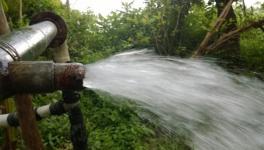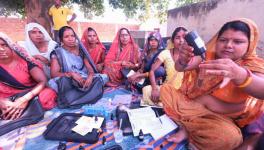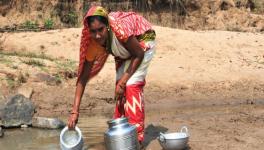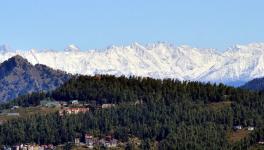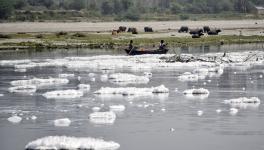World Water Day: Unsustainability of the System Cannot Beget Sustainable Solutions

Image Courtesy: BW Businessworld
“Watersheds come in families; nested levels of intimacy. On the grandest scale, the hydrologic web is like all humanity -- Serbs, Russians, Koyukon Indians, Amish, the billion lives in the People’s Republic of China -- its broadly troubled, but it’s hard to know how to help. As you work upstream toward home, you’re more closely related. The big river is like your nation, a little out of hand. The lake is your cousin. The creek is your sister. The pond is her child. And, for better or worse, in sickness and in health, you’re married to your sink.”
-Michael Parfit, National Geographic
The world is running out of fresh water, thanks to the unsustainable development model over the last few decades that has induced irreversible changes in climate change. Still, this model has also brought out an existential crisis.
The regular cycles of nature have been disrupted by climate change and massive abuse of water systems across the globe. Most governments abdicate their responsibility of protecting and conserving water systems rather than handing over the management to the private sector. But this corporate control over water is a threat to the wellbeing of humans.
MAKING THE INVISIBLE VISIBLE
‘Groundwater: making the invisible visible is the theme for the year 2022 World Water Day on March 22. The UN has called for enhancing knowledge exchange and collaboration, thereby increasing awareness of the importance of taking care of groundwater.
Why is groundwater important? It is important because 50% of all drinking water worldwide is from groundwater; 40% of water for all agriculture irrigation and 33% of total water required for the industry comes from groundwater.
There are finite supplies of freshwater. Assumptions that humanity would never run out of freshwater is inherently false. Available freshwater amounts to less than one half of 1% of all the water on earth. The rest is seawater, frozen in the polar ice, etc.
The relationship with water and ecosystems that sustain it must change; the sooner the better. Groundwater plays a vital role in sustaining ecosystems and enabling human adaptation to climate variability and change.
Groundwater is the major source of water supply in many cities worldwide, including most of the Indian cities.
India has 18% of the world’s population but only 4% of its water resources. This is one of the most water-stressed nations in the world.
Come summers and water in some Indian cities become a commodity 'as precious as gold’, terms a World Bank report in one of its columns on water. Indeed, it does, but the multilateral agencies' solutions lay their basis on further commoditising water and alienating the people further.
Whether water is a right or a need is a question that requires considerable attention. The advocates of private control over water- the 'Washington Consensus' - terms water as a need and not a right. The need can be fulfilled either by the State apparatus or by a private entity. The difference is that in the former (right), the citizens accrue a right from the State, whereas, in the latter, it is just a matter of demand and supply.
Unfortunately, the Indian government also follows the same dictum of water being a need, though not explicitly. Much propagated Jal Jeevan Mission (JJM) results from such fault lines.
The Indian story is also quite worrisome. According to a report, 30 Indian cities will face a grave water crisis and may eventually run out of water altogether. Forty per cent in Indian cities and thirty-one per cent of urban households, most in unauthorised colonies, do not have piped water connections. According to a CSE study, 48% of India's urban water supply depends on groundwater. In seven of the ten most populous cities, the groundwater has significantly decreased over the past decades. According to the NITI Aayog, nearly 70% of India's water is contaminated. This is the reality of India and mainly urban centres.
The JJM dashboard exhibited that out of 18.93 crore households in 2019, only 3.23 crore(17%) had piped water connections. This was after five years of Modi rule. The JJM works on the principles adopted from the Telangana model of Bhagiratha. Both Bhagiratha and JJM have salient features that are very appealing. Both talk about water to every household, women getting rid of the drudgery of carrying water etc. However, both underlie the strong presence of the private sector in the water supply and distribution system.
The fancy words like reducing 'non-revenue water' sound excellent, but the fact is that the NRW should mean checking leakages and loss during supply and distribution. This loss should not be linked to the user charges on water. Both the models push for such user charges by mounting the burden on the people.
GOVERNANCE OF WATER
In India, especially in the urban centres, governance or management of water is a key to ensuring the protection of aquifer ecosystems and providing an adequate quantity of potable water. Why is it that a metropolitan city like Delhi should destroy the forests of Sirmour district in Himachal Pradesh by constructing a dam (Renuka Dam) and then supplying water to the city, which is hundreds of kilometres far away? Just imagine the capital cost of such a project followed by its operation and maintenance.
Why should not cities be made to harvest water as a normal exercise? The government institutions and buildings occupy most of the spatial land; why should it not be mandatory to ensure zero water usage. The models of city development are faulty. Most of the cities and their freshwater bodies, bauris, springs have been contaminated, and once that is done. Because of their influence, the cities poach on the peripheries and then further to the rural hinterland. This is an unsustainable model. Gurgaon and the national capital region of Delhi are vibrant examples of such a disaster. Not only their own water bodies(urban commons) were usurped for the greed of real estate development, they were also contaminated in due course of time. Most of the smaller freshwater ponds, rivulets etc., have become open spaces of raw sewage.
The second issue in governance is the parastatals running the show in alliance with large corporations who, through their consultants, enter the cities and design water supply and sewage schemes in such a way that they just give up after some time. Instead of designing schemes in consultation with the people, these schemes are designed with high tech capital cost, which becomes unsustainable in the long run.
Take, for example, the water supply scheme designed in Leh town.
This flows from my personal interactions with the water officials of Leh; despite our repeated interventions that the water supply scheme should be designed in such a way that people form the bedrock of consultations. But instead, the scheme has been designed by professionals without considering people's wisdom and voice. Instead of tapping glacial water from the top, the town has constructed a water supply scheme to lift water from the Indus River. The Indus water scheme would cost around Rs 100 crore, and the operation cost would be nearly Rs 5-6 crore per year. At the same time, water tapped from the glacier will flow with gravity and will not cost more than Rs 10 crore and with minimal operational cost. Despite such an alternative, the Leh town opted for the water lift scheme from the Indus. This will pass the burden of maintenance onto the people though they did not have any role in designing the scheme.
The second example comes from my visit to the Indian Institute of Advanced Studies, formerly the Viceroy's Lodge, Summerhill, Shimla. However, the institute has a vast rainwater harvest tank with a capacity to cater to its water needs for a few months together. The institute still opts for a water supply scheme from the town's water utility. The water for the town is supplied from more than 70 km, which incurs a high cost. Still, the institute opts for the town's water supply instead of using its own resource.
The third example flows from a very recent statement of the Telangana chief minister abolishing its GO (Government Order) Number 111, dated March 11, 1996. This GO was to set a radius of 10 km buffer zone to protect the catchment areas of Himayatsagar and Osmanasagar lakes in Hyderabad city. Not only would it have a direct impact on the water supply to the city and the cost of switching from these reservoirs to fetching water from long distances. These are supposedly gravity reservoirs that supply drinking water without a single rupee being spent on pumping. The difference in pumping is stark.
"Currently, the government is spending Rs 2- Rs 5 KL(per kilolitre) to get water from these twin reservoirs, while its spending Rs 150 KL to get it from the Godavari River. This proves that it is also economically inadvisable to scrap GO 111," Donthi Narsimha Reddy, a renowned environmentalist, stated. Why is this being done? Simple answer-the real estate lobby in the city is pushing for claiming this radius for maximising their profits, which are part of the urban commons.
There has to be a demarcated differential in water management. Parastatals or city governments, preferably city governments, should have the onus and the capacity to ensure adequate quantity with quality water potability. Protecting and conserving water sources must be a major task to follow. It is important that the least city moves out from its boundaries and rejuvenates its own resources and groundwater for a secured life.
Get the latest reports & analysis with people's perspective on Protests, movements & deep analytical videos, discussions of the current affairs in your Telegram app. Subscribe to NewsClick's Telegram channel & get Real-Time updates on stories, as they get published on our website.









